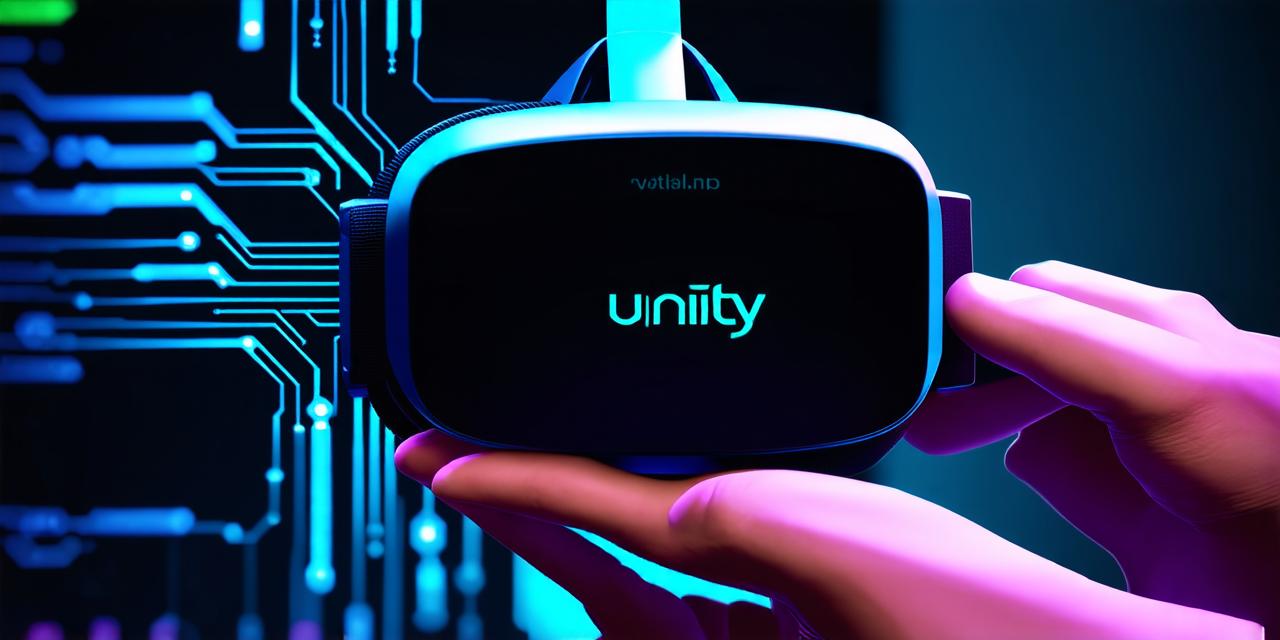Virtual Reality (VR) is a rapidly growing field that offers endless possibilities for entertainment, education, and other applications. As VR continues to gain popularity, developers are looking for efficient and effective ways to create engaging and immersive experiences for users. One such tool is Unity, a popular game engine that also supports VR development.
Why Choose Unity for VR Development?
There are several reasons why Unity is an excellent choice for VR development:
- Cross-platform compatibility: Unity supports multiple platforms, including mobile, desktop, and VR. This means that developers can create a single experience that works seamlessly across different devices. With the increasing popularity of VR, cross-platform compatibility has become even more important, as users expect their experiences to be accessible on any device they choose.
Large community
Unity has a large and active community of developers who contribute to its open-source codebase. This means that there are plenty of resources available for learning and troubleshooting. The community also offers support, advice, and inspiration for developers working in VR.
Scalability
Unity is scalable, which means it can handle complex VR experiences with ease. It also allows for easy integration with other tools and technologies, making it a versatile choice for developers. With the growing complexity of VR experiences, scalability has become even more important for developers to ensure that their experiences run smoothly and efficiently.
Getting Started with Unity in VR Development
Before diving into the world of VR development, it’s important to have a solid understanding of Unity. Here are some tips for getting started:
- Learn the basics of Unity: There are plenty of resources available online for learning the basics of Unity, including tutorials, documentation, and community forums. Take your time to understand the fundamentals before diving into VR development. Familiarizing yourself with Unity’s interface and basic game development concepts will make it easier to navigate the complex world of VR development.
Familiarize yourself with VR development tools
In addition to Unity, there are several other tools that are commonly used in VR development, such as 3ds Max, Maya, and Blender. It’s important to be familiar with these tools so you can work effectively with them in conjunction with Unity. Understanding how these tools work together will help you create more efficient and effective VR experiences.
Choose a VR platform
There are several VR platforms available, including Oculus Rift, HTC Vive, and PlayStation VR. It’s important to choose a platform that is compatible with your project and target audience. Each platform has its own strengths and weaknesses, so it’s essential to choose the one that best suits your needs.
Maximizing Potential in VR Development
Now that you have the basics down, let’s explore some tips for maximizing the potential of Unity in VR development:
- Optimize performance: VR experiences can be demanding on hardware, so it’s important to optimize performance to ensure a smooth and immersive experience. This includes reducing draw calls, minimizing texture usage, and avoiding unnecessary calculations. To achieve this, developers should use Unity’s profiling tools to identify performance bottlenecks and optimize their code accordingly.
Use motion sickness mitigation techniques
Motion sickness is a common issue with VR, but there are several techniques that can help mitigate it, such as using smoother camera movements and avoiding sudden changes in movement. Developers should also consider using Unity’s built-in anti-aliasing settings to reduce the risk of motion sickness.
Implement social features
Social features can make VR experiences more engaging and immersive for users. This includes features like chat, multiplayer, and sharing content. To implement social features in a VR experience, developers should use Unity’s networking capabilities and integrate with popular social media platforms.
Use advanced graphics and effects
VR offers the opportunity to create highly detailed and immersive experiences. Developers can take advantage of this by using advanced graphics and effects such as ray tracing, shaders, and particle effects. These techniques can help create a more realistic and engaging experience for users.
Leverage Unity’s built-in VR features
Unity has several built-in features designed specifically for VR development, including support for hand tracking, eye tracking, and room-scale environments. Developers should take advantage of these features to create a more immersive and interactive experience for users.
Summary
Unity is a powerful tool for VR development, and by following best practices and leveraging its features, developers can create engaging and immersive experiences for users. With the growing popularity of VR, there has never been a better time to learn and explore this exciting technology. Whether you’re a seasoned developer or just starting out in the world of VR, Unity has something to offer for everyone.
